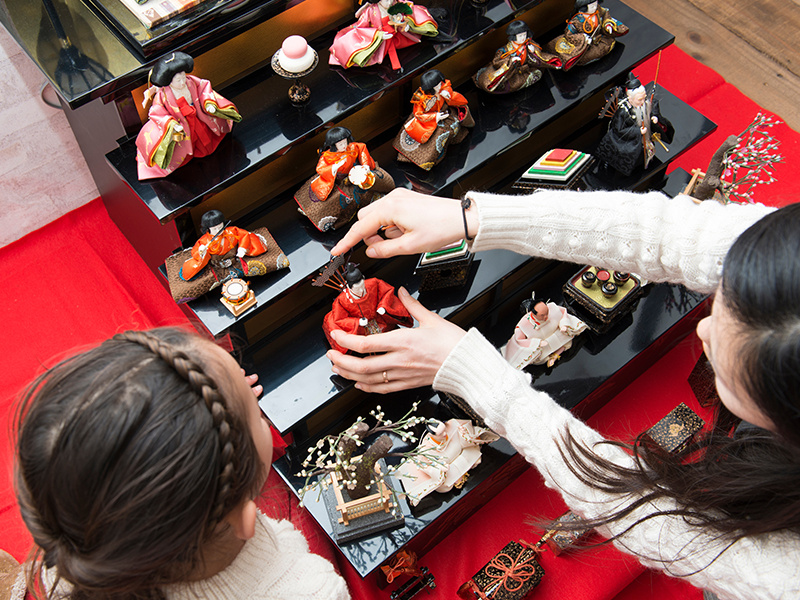UsefulHow to decorate Hina Dolls

In Kanto and Kansai (mainly Kyoto), the placement of "Dairi-bina" (a pair of male and female dolls made in the likeness of the Emperor and Empress) is often reversed.
In the Kanto region, the male dolls are on the left side and the female dolls are on the right side. In Kyoto and other parts of Kansai, the male dolls are on the right side and the female dolls on the left side. In Japan, there is an ancient belief that the left side is higher in rank than the right side. Therefore, the left minister is higher in rank than the right minister. This is the same reason why people purify their hands from the left side when they use the hand water at shrines. Hina dolls are made to look like Heian aristocrats, but in the Heian period, the emperor sat on the left side (facing right) of the queen. In Kyoto and some parts of the Kansai region, the Dairi-bina are arranged according to this custom. In the current imperial household, however, the emperor always stands on the right side (facing left) of the empress. When seated, he also sits on the right side. This positioning is in accordance with Western rules. This rule was adopted in Japan at the end of the Meiji period (1868-1912), following Western customs. In other words, Kansai (Kyoto) follows the old rules and Kanto follows the new rules, so it cannot be said which is right and which is wrong. It varies depending on the era and region, and there is no special rule that says it should be done in a certain way. As long as there are no major deviations from the standard way of decorating, each family is free to decorate in either the old or the modern style.